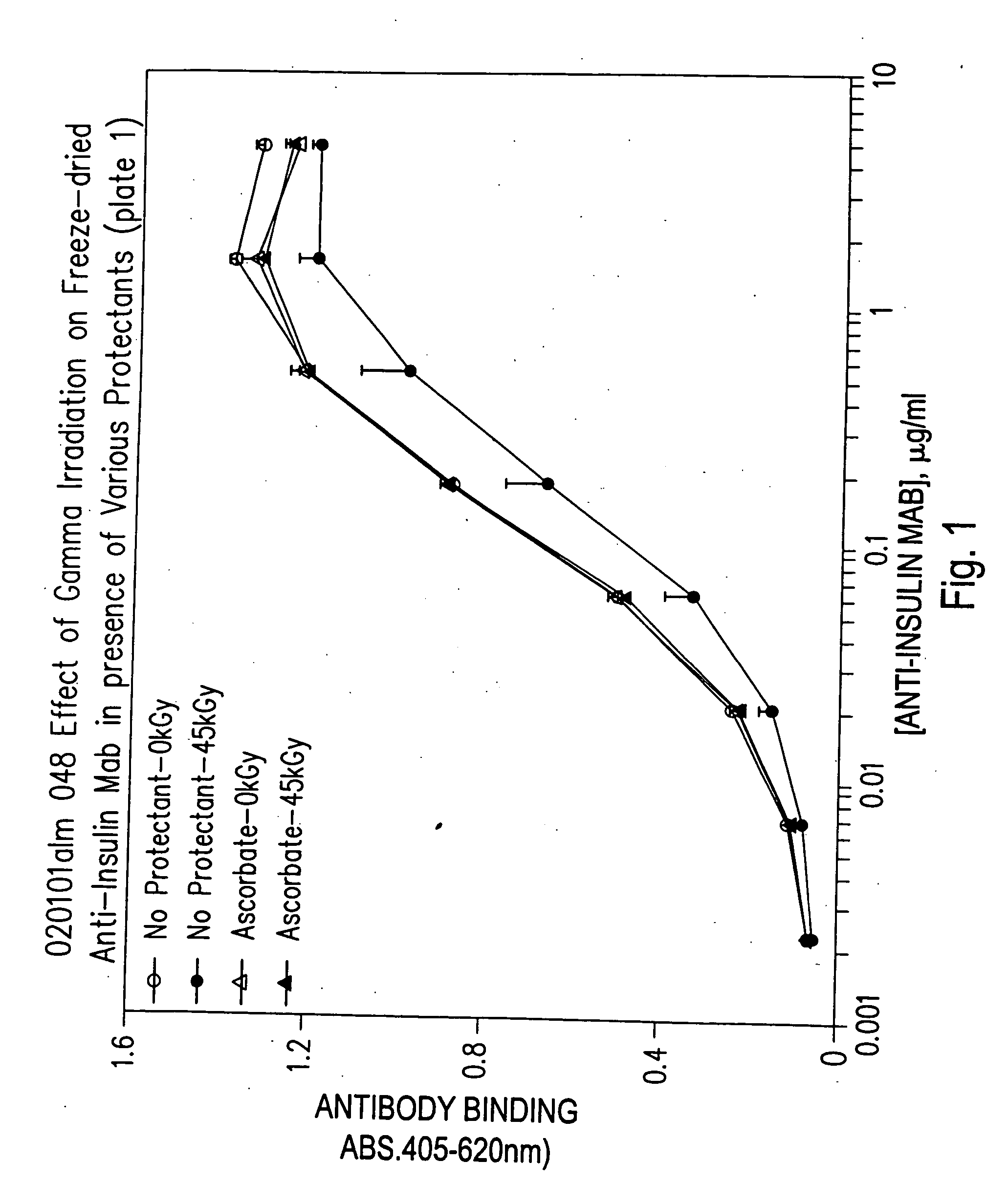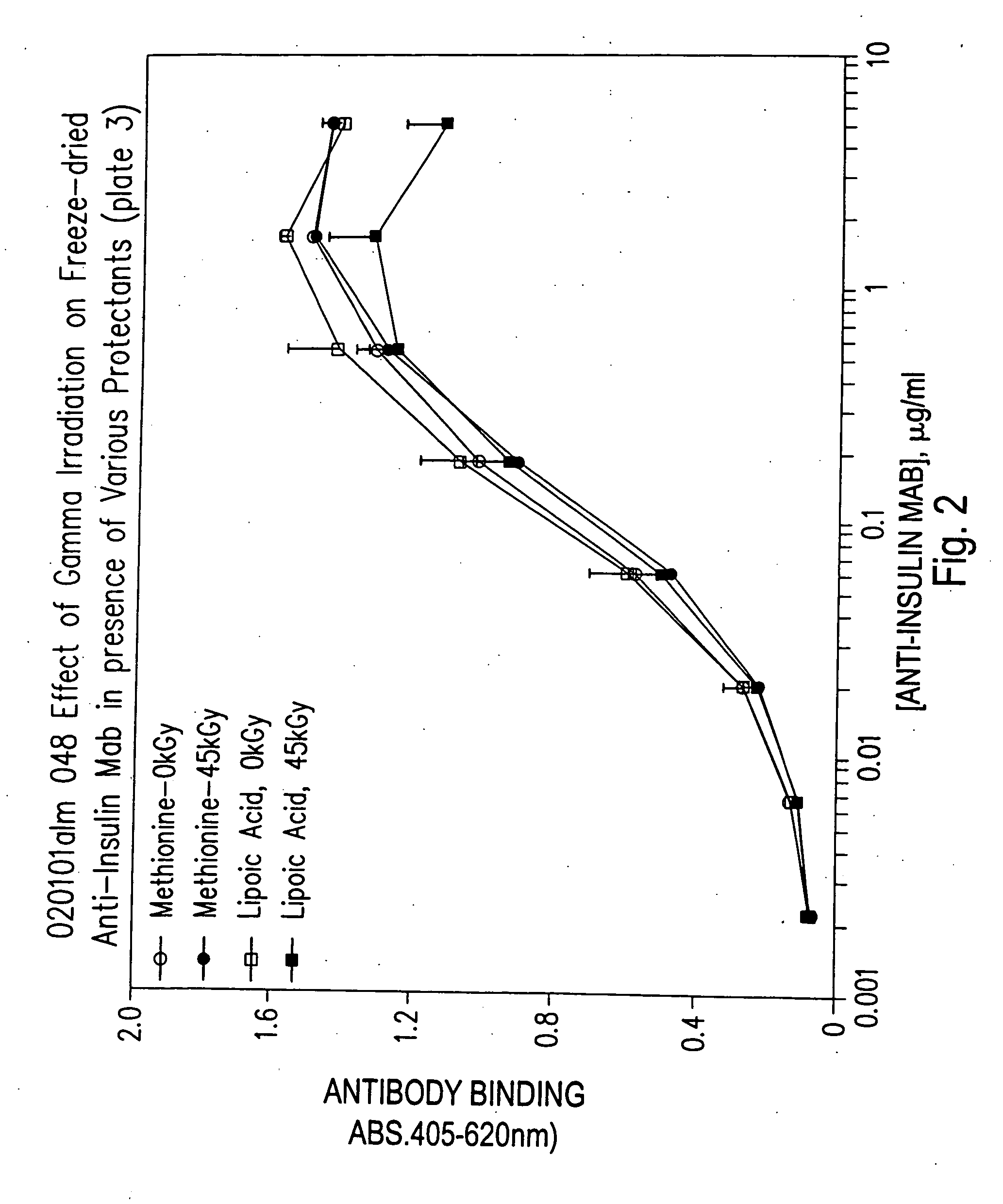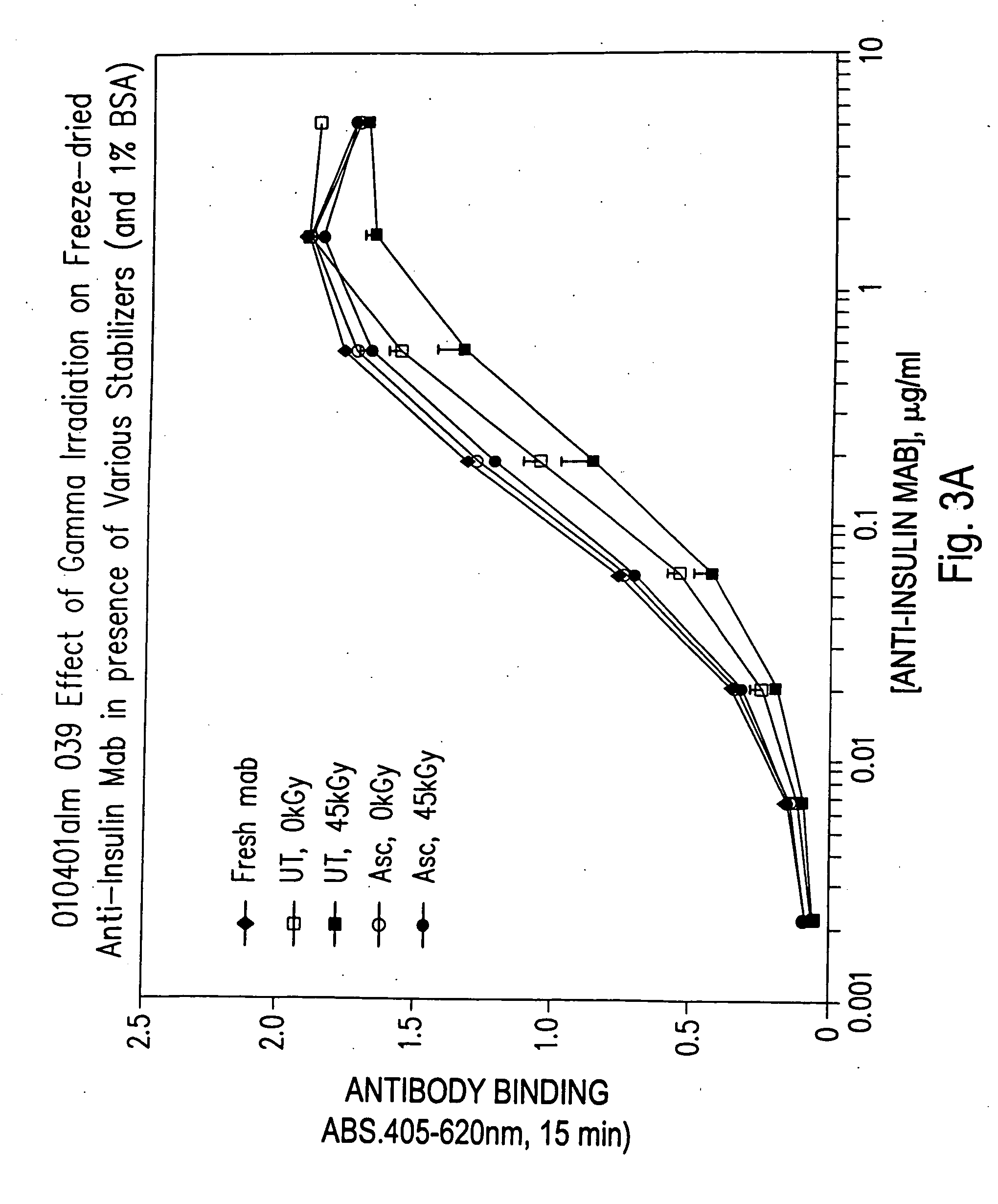Methods for sterilizing biological materials
a biological material and method technology, applied in the field of methods for sterilizing biological materials, can solve the problems of unreliable, unwanted and potentially dangerous contaminants in products that are prepared for human, veterinary or experimental use, viruses, bacteria, yeasts,
- Summary
- Abstract
- Description
- Claims
- Application Information
AI Technical Summary
Benefits of technology
Problems solved by technology
Method used
Image
Examples
example 1
Sterilization of Blood
[0056] A 200 ml bag of one day old packed red blood cells was used. Ethanol was added to the cells in order to achieve a final ethanol concentration of 0.01% v / v. The red blood cells were diluted by a factor of one in ten using a modified Citrate Phosphate Dextrose (CPD) solution having a pH of about 6.4 to 6.7 and having the following composition in a total volume of 500 ml:
Citrate Acid Monohydrate0.2 gSodium Citrate Dihydrate27.3 g Sodium Monobasic Phosphate2.2 gSodium Dibasic Phosphate1.0 gDextrose3.2 g
[0057] The cells were irradiated in a commercial size gamma irradiator which contained a cobalt 60 source rack. Irradiation was done off carrier in an unprotected box. The cells were irradiated for twenty-four hours at a rate of approximately 1 kGy / hr. After the irradiation period the red blood cells were examined visually and were found to be viable, having a brilliant red color. A control sample, consisting of packed red blood cells that were not diluted ...
example 2
Sterilization of Dextrose
[0059] Dextrose (or glucose) containing solutions are used in the treatment of carbohydrate and fluid depletion, in the treatment of hypoglycemia, as a plasma expander, in renal dialysis and to counteract hepatotoxins (The Merck Index, Eleventh Edition, Merck & Co., Inc. (1989), and Martindale's Extra Pharmacopecia, p. 1, 265). Dextrose is also the preferred source of carbohydrate in parental nutrition regiments (The Merck Index, Eleventh Edition, Merck & Co., Inc. (1989), and Martindale's Extra Pharmacopecia, p. 1, 265). In all of the above applications, the dextrose must be sterilized before use. Sterilization of dextrose-containing products is generally done by heat sterilization or autoclaving. Unfortunately, these methods have been reported to degrade or carmelize dextrose-containing solutions resulting in a color change in the solution (Martindale's Extra Pharmacopecia p. 1, 265). Gamma irradiation of glucose has also been reported to decompose glucos...
example 3
Sterilization of Human Serum Albumin
[0062] Normal Human Serum Albumin was irradiated as a 25% salt-poor solution to a total dose of 25 kGy over 36 hours using a Gammacell 220 (Co60 is the gamma ray source in this instrument). The temperature was not controlled during the irradiation but it is estimated that the container holding the albumin solution was approximately 23° C. The results of HPLC analysis are given in Table 2.
TABLE 2ParameterControl (%)Irradiated (%)Polymer23Dimer78Monomer9086Low Molecular13WeightpH7.056.97NTU (must be >20)11.411.4
[0063] As the results demonstrate, Normal Human Serum Albumin can safely be irradiated to 25 kGy (at a rate of approximately 0.7 kGy / hr) at room temperature without adversely affecting the essential properties of the protein. This has not been demonstrated before. All other attempts at irradiating serum albumin require that it be irradiated in the frozen stage. This adds to the cost and difficulty of doing the irradiation.
PUM
| Property | Measurement | Unit |
|---|---|---|
| total volume | aaaaa | aaaaa |
| temperature | aaaaa | aaaaa |
| molecular weight | aaaaa | aaaaa |
Abstract
Description
Claims
Application Information
 Login to View More
Login to View More - R&D
- Intellectual Property
- Life Sciences
- Materials
- Tech Scout
- Unparalleled Data Quality
- Higher Quality Content
- 60% Fewer Hallucinations
Browse by: Latest US Patents, China's latest patents, Technical Efficacy Thesaurus, Application Domain, Technology Topic, Popular Technical Reports.
© 2025 PatSnap. All rights reserved.Legal|Privacy policy|Modern Slavery Act Transparency Statement|Sitemap|About US| Contact US: help@patsnap.com



